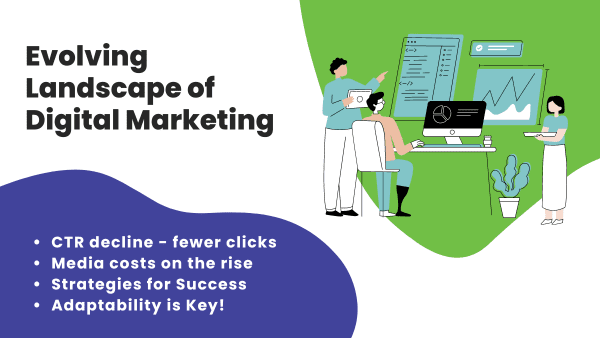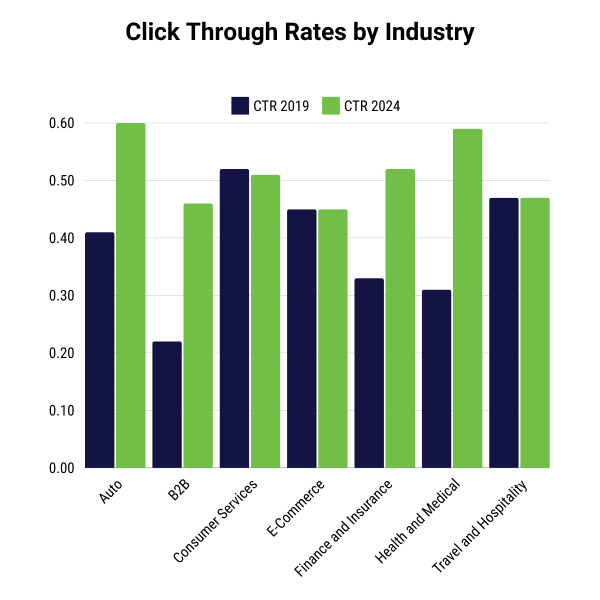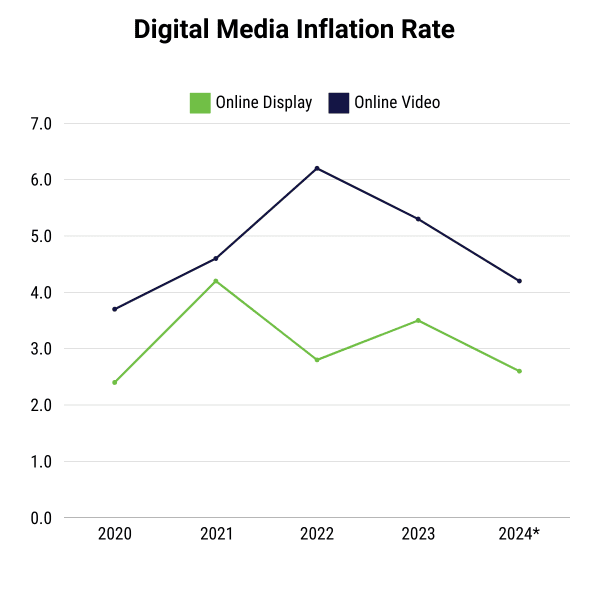Evolving Landscape of Digital Marketing
The past five years have been a whirlwind of change, from the economic upheaval of inflation and volatile job and housing markets to the global disruption of the COVID-19 pandemic, to name a few. These unprecedented events have impacted our personal lives and profoundly reshaped the marketing landscape, forcing businesses to adapt their strategies in response. One key trend is the decline in click-through rates (CTR) for display advertising. Since 2018 the average CTR has decreased 76%. (source: wordstream).

The Decline of Display CTR: Why Fewer Clicks?
Let’s delve deeper into the factors behind this decline and explore strategies for navigating the new digital landscape:

While we have seen the national click through rate decline since 2019, certain industries have seen an increase, like auto, B2B and Finance. (source: wordstream 2019 and 2024)
The Cost Conundrum: How Does it All Play Out?
While CTRs decline, media buying costs are on the rise. Here’s a breakdown of some key cost factors:

Source: Statista
Adapting to the New Reality: Strategies for Success
To thrive in this evolving digital landscape, businesses need to embrace a more strategic approach:
Digital Out-of-Home (DOOH) advertising, which includes dynamic billboards, digital displays in public spaces, and even screens on vehicles, offers unique opportunities for targeted reach and engagement.
Audio advertising, including podcasts, radio, and music streaming platforms, has also experienced a resurgence. With the increasing popularity of voice-activated devices and the growing demand for audio content, audio advertising provides a valuable avenue for reaching consumers.
Conclusion: Adaptability is Key
The digital marketing landscape has undergone a seismic shift. Businesses need to adapt to declining CTRs, rising costs, and a more competitive environment. By prioritizing high-value channels, crafting exceptional content, and testing emerging digital channels like CTV, DOOH, and audio, you can still connect with your audience and achieve your marketing goals.
Understanding the factors behind rising media buying costs allows you to budget more effectively and maximize the ROI of your marketing campaigns. The key to success lies in continuous adaptation, strategic planning, and a willingness to embrace the latest trends and technologies.
To learn more about these exciting new opportunities and how to leverage them effectively, sign up for our newsletter and follow us on LinkedIn.
Krystal Finnigan, Marketing Manager